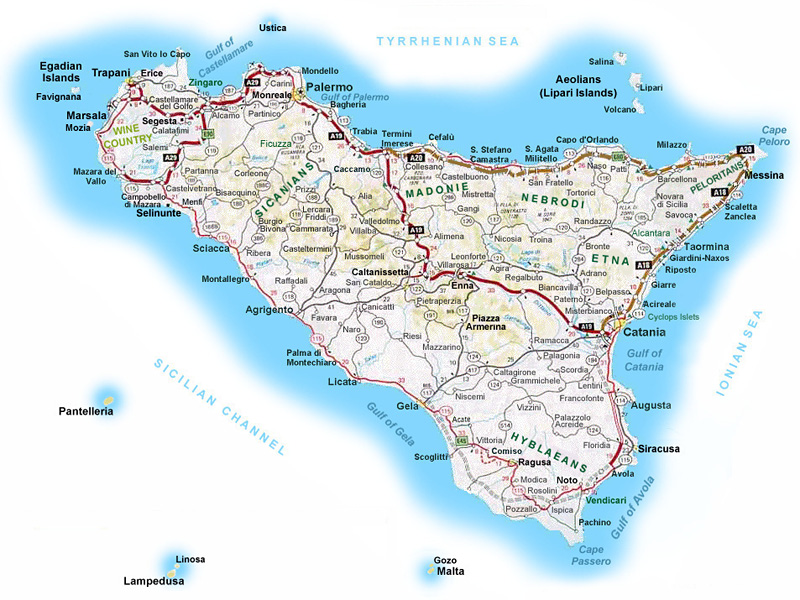
Sicily is
the largest region of Italy and the largest island in the Mediterranean
Sea, located in the middle of this large body of water. While most of Sicily is hilly or mountainous, it
has coastal plains and salt marshes, and a great variety of plant and animal life.
Sicily is sometimes
considered the world's most conquered island because from the earliest times it was the home of
peoples from many different lands.
This has influenced the Sicilian language, the Sicilian culture and even its
food. Five million Sicilians live on the island.
Sicily's largest cites, Palermo
and Catania, each
have around a million residents who live in the city or near it.
Sicily's other large cities are Messina, Siracusa, and Trapani.
The name Sicily comes from the names of the island's original inhabitants, the
Sicels and Sicans. Though it is part of Italy today, Sicily was settled
by Greeks around eight centuries BC (BCE), or almost three thousand years
ago. This makes Sicily one of Europe's oldest societies. Sicily has sometimes
been part of empires and countries ruled from far away, from the Asian and
African parts of the Mediterranean Sea.
Sicily is full of ancient Greek temples, such as the one at Segesta, and
medieval castles like the one at Caccamo, but also beautiful Baroque palaces.
Over the centuries Sicily has been the birthplace of many great writers, composers and artists.
The most important part of the Sicilian economy is based on the production of foods such as citrus fruits, wine
and olive oil. Tourism is a very important industry. Sicily has a number of companies involved in manufacturing and information technology.
Link to a page in the subject boxes here or from the map of Sicily that follows.
|





